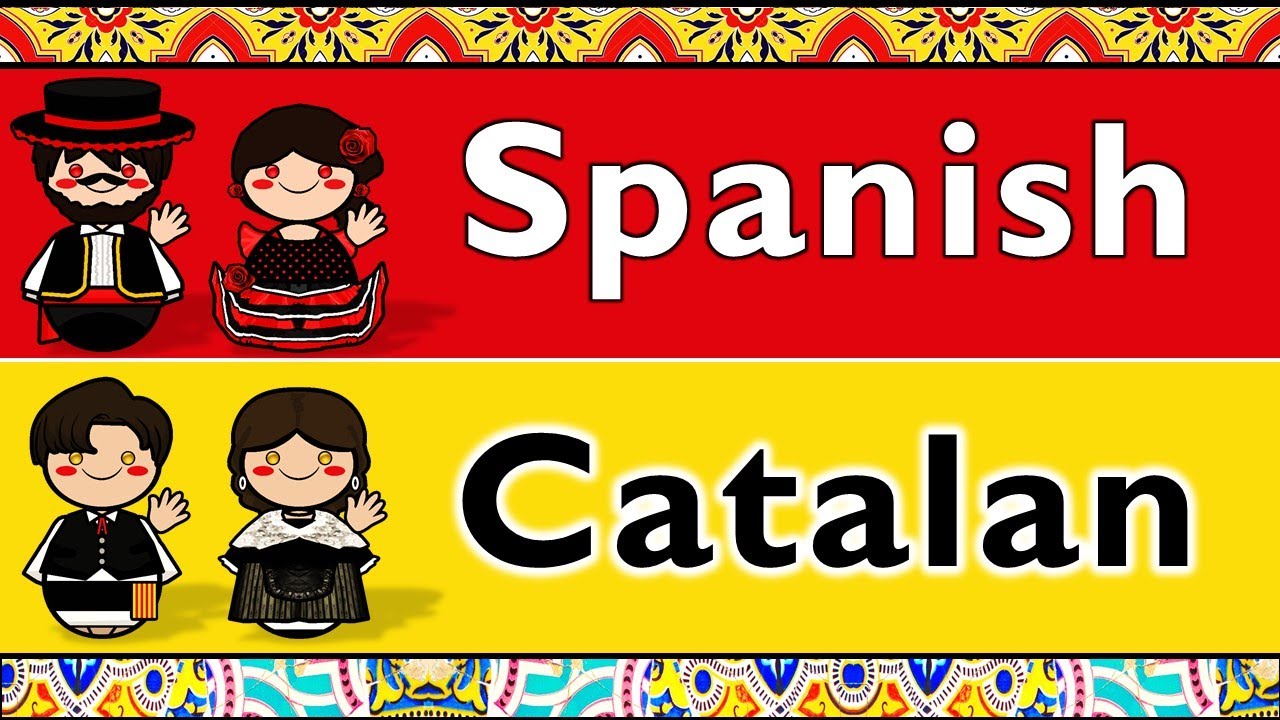Home>Language and Grammar>Unlock The Secret: Master The Difference Between ‘Esta’ And ‘Está’ In Spanish!


Language and Grammar
Unlock The Secret: Master The Difference Between ‘Esta’ And ‘Está’ In Spanish!
Published: February 12, 2024
Master the difference between 'esta' and 'está' in Spanish with our comprehensive guide. Improve your language and grammar skills today!
(Many of the links in this article redirect to a specific reviewed product. Your purchase of these products through affiliate links helps to generate commission for Noodls.com, at no extra cost. Learn more)
Table of Contents
Introduction
Welcome to the fascinating world of Spanish language nuances! If you've ever found yourself puzzled by the difference between 'Esta' and 'Está' in Spanish, you're not alone. These two words may look similar, but they serve distinct purposes and can significantly alter the meaning of a sentence. Understanding when and how to use 'Esta' and 'Está' correctly is a crucial step towards mastering the Spanish language.
In this comprehensive guide, we will delve into the intricacies of 'Esta' and 'Está', unraveling their unique roles and providing practical tips to ensure their accurate usage. Whether you're a beginner eager to grasp the basics or an intermediate learner seeking to refine your language skills, this exploration will equip you with the knowledge and confidence to wield 'Esta' and 'Está' with precision.
So, buckle up and get ready to unlock the secret behind these two seemingly interchangeable words. By the end of this journey, you'll not only distinguish between 'Esta' and 'Está' effortlessly but also gain a deeper appreciation for the richness of the Spanish language. Let's embark on this enlightening quest together!
Understanding the difference between 'Esta' and 'Está'
The disparity between 'Esta' and 'Está' lies in their grammatical functions and the contexts in which they are employed. To comprehend this dissimilarity, it's imperative to recognize that 'Esta' and 'Está' belong to distinct parts of speech. 'Esta' is a demonstrative adjective, primarily used to indicate the proximity of a singular feminine noun. On the other hand, 'Está' serves as the third person singular form of the verb 'estar', conveying the state or condition of a subject at a specific moment.
When utilizing 'Esta', it is crucial to consider its agreement with the gender and number of the noun it modifies. For instance, 'Esta casa' (This house) and 'Esta mesa' (This table) exemplify the use of 'Esta' with singular feminine nouns. Conversely, 'Está' is employed to express the temporary state or location of a subject. For instance, 'El libro está sobre la mesa' (The book is on the table) and 'Ella está feliz' (She is happy) showcase the application of 'Está' to denote the state of an object or person.
Furthermore, 'Esta' is employed when referring to the location of an object or person, emphasizing its proximity. In contrast, 'Está' is utilized to convey the condition, emotion, or location of a subject at a specific moment. Understanding the nuanced distinction between these two terms is pivotal in constructing grammatically accurate and contextually precise sentences in Spanish.
By grasping the fundamental disparities between 'Esta' and 'Está', learners can navigate the intricacies of Spanish grammar with confidence and finesse. This foundational understanding sets the stage for harnessing the full potential of these words, enabling individuals to articulate their thoughts and express nuanced meanings with clarity and accuracy. As we delve deeper into the distinct applications of 'Esta' and 'Está', you will gain a comprehensive understanding of how to wield these linguistic tools effectively in various contexts.
How to use 'Esta' correctly
Mastering the correct usage of 'Esta' is essential for constructing grammatically precise sentences in Spanish. As a demonstrative adjective, 'Esta' is employed to indicate the proximity of a singular feminine noun. To utilize 'Esta' accurately, it is imperative to consider both the gender and number agreement with the noun it modifies.
When employing 'Esta', it is crucial to discern the gender and number of the noun it accompanies. For instance, when referring to a singular feminine noun such as 'casa' (house) or 'mesa' (table), 'Esta' is the appropriate choice. Consider the examples: 'Esta casa es hermosa' (This house is beautiful) and 'Esta mesa es pequeña' (This table is small). In these instances, 'Esta' concurs with the feminine singular nouns 'casa' and 'mesa', aligning with the grammatical rules of agreement.
Furthermore, 'Esta' is utilized when emphasizing the proximity of an object or person. For instance, 'Esta silla está cerca' (This chair is close) and '¿Te gusta esta película?' (Do you like this movie?) exemplify the use of 'Esta' to denote the nearness of an object or the speaker's proximity to it.
In addition to proximity, 'Esta' can also convey the current or immediate presence of an object or person. For instance, 'Esta flor es para ti' (This flower is for you) and 'Esta es mi amiga' (This is my friend) showcase the use of 'Esta' to introduce or present something in close proximity.
By internalizing these guidelines, learners can confidently wield 'Esta' to accurately describe and emphasize the proximity of singular feminine nouns. This foundational understanding empowers individuals to construct coherent and contextually precise sentences, thereby enhancing their proficiency in the Spanish language.
As we delve deeper into the intricacies of 'Esta', it becomes evident that mastering its correct usage is pivotal in harnessing the full expressive potential of the Spanish language. Now, let's explore the nuances of using 'Está' correctly to further enrich our linguistic repertoire.
How to use 'Está' correctly
Mastering the precise usage of 'Está' is fundamental for effectively conveying the temporary state, location, or condition of a subject in Spanish. As the third person singular form of the verb 'estar', 'Está' plays a pivotal role in expressing the current state of a subject at a specific moment. Understanding the nuanced applications of 'Está' empowers learners to construct contextually accurate and grammatically sound sentences, thereby enhancing their proficiency in the Spanish language.
When employing 'Está', it is essential to grasp its association with the temporary state or location of a subject. For instance, 'El gato está en la cama' (The cat is on the bed) and 'El restaurante está cerrado' (The restaurant is closed) exemplify the use of 'Está' to denote the current location or state of an object or place. In these instances, 'Está' conveys the transient condition or position of the subject, providing crucial contextual information.
Furthermore, 'Está' is utilized to express the emotional or physical state of a person or object at a specific moment. For example, 'Ella está cansada' (She is tired) and 'El bebé está dormido' (The baby is asleep) showcase the application of 'Está' to convey the immediate condition or state of an individual or entity. By employing 'Está' in these contexts, speakers can articulate the current emotional or physical status with precision and clarity.
Additionally, 'Está' is employed to indicate the temporary nature of a condition or state. Whether describing the weather, temporary emotions, or transitional states, 'Está' serves as a linguistic tool to capture the fleeting nature of a subject's state. For instance, 'Hoy está soleado' (Today it is sunny) and 'El proyecto está en progreso' (The project is in progress) demonstrate the use of 'Está' to convey temporary conditions or ongoing processes.
By internalizing these guidelines, learners can adeptly wield 'Está' to accurately express the current state, location, or condition of subjects in various contexts. This comprehensive understanding equips individuals with the linguistic prowess to construct nuanced and contextually precise sentences, thereby elevating their proficiency in the Spanish language.
As we delve deeper into the intricacies of 'Está', it becomes evident that mastering its correct usage is pivotal in harnessing the full expressive potential of the Spanish language. Now, let's explore the nuances of using 'Está' correctly to further enrich our linguistic repertoire.
Common mistakes and how to avoid them
Mastering the distinction between 'Esta' and 'Está' in Spanish is undoubtedly a challenging endeavor, and learners often encounter common pitfalls that hinder their linguistic fluency. By identifying these prevalent errors and understanding how to circumvent them, individuals can fortify their command of these crucial linguistic elements.
One common mistake involves overlooking the gender and number agreement when using 'Esta'. As a demonstrative adjective, 'Esta' must align with the singular feminine noun it modifies. Failing to adhere to this agreement can lead to grammatical inaccuracies and disrupt the coherence of the sentence. To avoid this error, it is imperative to conscientiously match 'Esta' with singular feminine nouns, ensuring seamless agreement and grammatical precision.
Similarly, misinterpreting the temporary nature of 'Está' often leads to erroneous usage. 'Está' is specifically employed to denote the transient state, location, or condition of a subject at a specific moment. Misapplying 'Está' to convey permanent attributes or characteristics can distort the intended meaning of the sentence. To mitigate this error, learners should discern the temporary nature of the subject's state and reserve 'Está' for conveying momentary conditions or positions, thereby preserving the contextual accuracy of their expressions.
Another prevalent mistake involves interchangeably using 'Esta' and 'Está' without discerning their distinct functions. Due to their similar spellings and pronunciation, learners may inadvertently substitute one for the other, resulting in linguistic ambiguity. To overcome this challenge, it is crucial to internalize the unique roles of 'Esta' as a demonstrative adjective indicating proximity and 'Está' as the third person singular form of the verb 'estar', signifying the current state or location of a subject. By honing this differentiation, individuals can wield 'Esta' and 'Está' with precision, elucidating their intended meanings effectively.
Furthermore, neglecting the contextual nuances of 'Esta' and 'Está' can lead to misinterpretations and miscommunications. It is essential to consider the specific context and intended message when choosing between 'Esta' and 'Está'. By contextualizing their usage within the broader narrative of the sentence, learners can ensure that 'Esta' and 'Está' seamlessly integrate into the linguistic fabric, enhancing the coherence and clarity of their expressions.
In summary, by recognizing and addressing these common mistakes, learners can navigate the intricacies of 'Esta' and 'Está' with confidence and accuracy. Through diligent practice and a keen awareness of these potential pitfalls, individuals can elevate their proficiency in Spanish, harnessing the full communicative potential of these indispensable linguistic tools.
Read more: The Surprising Difference Between Este And Esta – You Won’t Believe What You’ve Been Getting Wrong!
Practice exercises to master the difference
To solidify your understanding of the disparity between 'Esta' and 'Está' in Spanish, engaging in practice exercises is instrumental. These exercises are designed to immerse you in contextual scenarios, allowing you to apply the distinct usage of 'Esta' and 'Está' with precision and confidence.
Exercise 1: Sentence Completion
- Complete the following sentences by choosing the appropriate word, 'Esta' or 'Está':
- _______ casa es grande. (This house is big)
- _______ lloviendo afuera. (It is raining outside)
- ¿_______ tu hermana en casa? (Is your sister at home?)
- _______ película es muy emocionante. (This movie is very exciting)
Exercise 2: Contextual Application
- Create three sentences using 'Esta' to denote proximity and three sentences using 'Está' to convey a temporary state or location. Ensure that the chosen words align with the gender and number of the nouns and accurately capture the intended meaning.
Exercise 3: Dialogue Construction
- Form a brief dialogue between two individuals, incorporating 'Esta' and 'Está' in their conversation. The dialogue should reflect everyday scenarios, such as discussing the location of objects, expressing emotions, or describing current conditions. Ensure that the usage of 'Esta' and 'Está' aligns with the context and effectively communicates the intended message.
Exercise 4: Narrative Creation
- Craft a short narrative that incorporates 'Esta' and 'Está' to vividly describe a scene or situation. Whether portraying a setting, expressing emotions, or detailing a specific location, infuse the narrative with the nuanced usage of 'Esta' and 'Está' to convey a rich and contextually precise story.
By actively participating in these practice exercises, you will internalize the distinct functions of 'Esta' and 'Está', honing your ability to discern their appropriate usage in various contexts. These exercises serve as invaluable opportunities to reinforce your grasp of these fundamental linguistic elements, empowering you to wield 'Esta' and 'Está' with fluency and accuracy.
Through consistent practice and application, you will seamlessly integrate the nuanced usage of 'Esta' and 'Está' into your linguistic repertoire, enhancing your proficiency in Spanish and unlocking the full expressive potential of these indispensable words. Embrace these exercises as stepping stones towards mastering the difference between 'Esta' and 'Está', and embark on this enriching journey with confidence and determination.
Conclusion
In conclusion, the distinction between 'Esta' and 'Está' in Spanish is not merely a matter of linguistic technicality; it embodies the essence of precision and contextual relevance in language usage. Throughout this exploration, we have delved into the unique roles of 'Esta' as a demonstrative adjective signifying proximity and 'Está' as the third person singular form of the verb 'estar', conveying the current state or location of a subject. By unraveling the intricacies of these two words, we have equipped ourselves with the linguistic finesse to articulate nuanced meanings with clarity and accuracy.
Mastering the difference between 'Esta' and 'Está' is a pivotal milestone in the journey of Spanish language acquisition. It empowers learners to construct grammatically precise sentences, ensuring seamless agreement and contextual accuracy. The ability to discern the gender and number agreement when using 'Esta' and to recognize the transient nature of a subject's state when employing 'Está' is instrumental in crafting coherent and contextually precise expressions.
As we reflect on this enlightening exploration, it becomes evident that the mastery of 'Esta' and 'Está' transcends grammatical proficiency; it embodies a profound appreciation for the richness and depth of the Spanish language. These two words encapsulate the dynamic interplay between language and context, offering a gateway to express emotions, describe locations, and convey transient states with eloquence and finesse.
Furthermore, the practice exercises presented in this guide serve as invaluable tools for internalizing the nuanced usage of 'Esta' and 'Está'. By actively engaging in contextual scenarios, learners can fortify their command of these linguistic elements, honing their ability to discern their appropriate usage in various contexts. Through consistent practice and application, individuals can seamlessly integrate the nuanced usage of 'Esta' and 'Está' into their linguistic repertoire, elevating their proficiency in Spanish and unlocking the full expressive potential of these indispensable words.
In essence, the journey to master the difference between 'Esta' and 'Está' is a testament to the transformative power of language learning. It is a journey that transcends linguistic technicalities, fostering a deep understanding of cultural nuances and linguistic precision. By embracing this journey with determination and enthusiasm, learners embark on a path that leads to not only linguistic proficiency but also a profound connection to the beauty and intricacies of the Spanish language.













